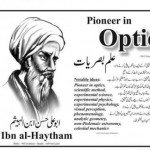- This topic has 10 replies, 6 voices, and was last updated 9 years, 5 months ago by
 Karan Ahuja.
Karan Ahuja.
-
AuthorPosts
-
-
February 27, 2016 at 10:29 am #30405
 gherbi mohamedParticipant
gherbi mohamedParticipanthi,
can anyone help me to build a simple example for MIMO system on fibre optic (multimode) under optisystem.
best regards -
February 27, 2016 at 12:11 pm #30412
 prakash jatParticipant
prakash jatParticipanthi gherbi
generate multiple copy of signal through fork and then transmit through different different mm fiber after that combine back using power combiner
-
February 27, 2016 at 4:15 pm #30415
 gherbi mohamedParticipant
gherbi mohamedParticipantthanks a lot
-
February 29, 2016 at 12:55 am #30443
 FAYIQA NAQSHBANDISpectator
FAYIQA NAQSHBANDISpectatorHello,
i want to ask if you were able to implement MIMO system in optiwave.
If so can you please upload the screenshot of your design. I would be very grateful to you people.Thanking in advance.
-
March 1, 2016 at 1:07 pm #30762
 gherbi mohamedParticipant
gherbi mohamedParticipantok
-
March 3, 2016 at 8:46 am #31200
 FAYIQA NAQSHBANDISpectator
FAYIQA NAQSHBANDISpectatorHi gherbi
I think you can do it even by using a single transmitter and a single reciever.What i mean is that you use a tunable transmitter.The same transmitter can be used for transmitting different wavelengths and use a tunable reciever at the reciever end which can be used to tune itself to a particular wavelength.
Although the best way is to use multiple transmitters and recievers but tunability will not limit the number of MIMO transrecievers in your designHope it helps
Regards
-
April 28, 2016 at 9:02 pm #38623
 Rajguru M. MohanParticipant
Rajguru M. MohanParticipantHi,
As Current MMF standards, such as OM3 and OM4, use fibers with core radii of 50 µm, allowing hundreds of modes to propagate.
In addition, fibers with large radii can support higher
peak powers, relative to fibers with small radii, while still operating in the
linear regime. MMF has practical advantages over single-mode fiber (SMF)
such as increased alignment tolerances and ease of packaging,
which can lead to significant cost savings. The main drawback
of MMF is the multimode nature of the fiber that gives rise to
modal dispersion and limits its bandwidth to a fraction of what
can be achieved with SMF. Though it seems that little can be
done about the inherent modal dispersion associated with the
multimode nature of fibers, researchers have achieved improvements
in the bandwidth–distance product of MMF using several
approaches such as selective modal excitation.Thanks,
-
May 3, 2016 at 11:53 am #38759
 umer ashraf waniParticipant
umer ashraf waniParticipanthttps://www.google.co.in/url?sa=t&rct=j&q=&esrc=s&source=web&cd=1&cad=rja&uact=8&ved=0ahUKEwjppLbCob7MAhXRB44KHVKnBzsQFggcMAA&url=http%3A%2F%2Fwww.photonics.ucla.edu%2Fmedia%2Fpublication%2Fjournal%2F101109JLT2005850787.pdf&usg=AFQjCNEdTuz2Hv3aUvddrY4lL7Z9YtP8gQ&sig2=D_IQLBDC0R3eo10I4wzo1Q
https://www.google.co.in/url?sa=t&rct=j&q=&esrc=s&source=web&cd=2&cad=rja&uact=8&ved=0ahUKEwjppLbCob7MAhXRB44KHVKnBzsQFgglMAE&url=https%3A%2F%2Farxiv.org%2Fpdf%2F1304.0422&usg=AFQjCNEijKNreDWkNSba5HnJnanHOhz7rA&sig2=4Jizsjpjm4P-D1BytGe0TA
https://www.google.co.in/url?sa=t&rct=j&q=&esrc=s&source=web&cd=3&cad=rja&uact=8&ved=0ahUKEwjppLbCob7MAhXRB44KHVKnBzsQFggsMAI&url=http%3A%2F%2Fwww.bu.edu%2Fsmartlighting%2Fresearch%2Foptical-mimo%2F&usg=AFQjCNH_veGwu0J_Gxe7UJ-riERv35q51g&sig2=lBc3a29wL204DCIy7i2a_Q -
June 24, 2016 at 8:27 pm #40766
 Karan AhujaSpectator
Karan AhujaSpectatorHi Gherbi
For MIMO implementation you need to consider that an optical multiple-input multiple-output (MIMO) communication system uses multiple LED-based transmitters and multiple receivers to transfer parallel streams of data. As compared to a single-transmitter single-receiver system using the same amount of signal power, a MIMO system can provide higher data rates with fewer transmission errors and better reliability.
I am attaching a snapshot of general design of a MIMO system I hope this will your cause.Thanks
-
June 24, 2016 at 8:28 pm #40768
 Karan AhujaSpectator
Karan AhujaSpectatorAlso i want to mention that there are three different types of optical MIMO systems:
1. λ-MIMO: This system is implemented using a single luminaire composed of LEDs that emit different colors of light. Each LED acts as a different transmitter. Thus the parallel data streams can be transmitted over different colors of light. The receiver for this system implements optical filters to recover the signals transmitted over each color.
2. s-MIMO: This system is implemented using multiple luminaires that are placed at different locations on the ceiling. Each luminaire is composed of the same type of LED and thus emits the same color of light. In this case, the data streams are separated spatially because they each originate at a different spatial location. A ‘camera-like’ receiver can then separate the different signal streams and recover data.
3. h-MIMO: This system is a hybrid of the above two systems. It uses multiple luminaires, each composed of different colored LEDs to transmit signals that are separated in color and space. A ‘camera-like’ receiver that can distinguish different colors can then separate the different signal streams and recover data.-
June 24, 2016 at 8:30 pm #40769
 Karan AhujaSpectator
Karan AhujaSpectatorI want to add that MIMO communications over optical fibers is an attractive solution to the ever increasing demand for Internet bandwidth. It is presented that a propagation model that takes input-output coupling into account for MIMO MMF systems. A coupling strategy was suggested and simulations showed that the capacity of an Nt × Nt MIMO system over a fiber with M Nt modes can approach the capacity of an ideal fiber with Nt modes. A random input-output coupling model was used to describe the behavior of the system when the design of the input-output couplers is not available. The results illustrated that, under random coupling, the capacity of an Nt × Nt MIMO system over a fiber with M Nt modes is almost equal to that of an Nt-mode fiber.
You may refer to these papers for implementation.
https://arxiv.org/pdf/1304.0422.pdfThanks
-
-
-
-
AuthorPosts
- You must be logged in to reply to this topic.

